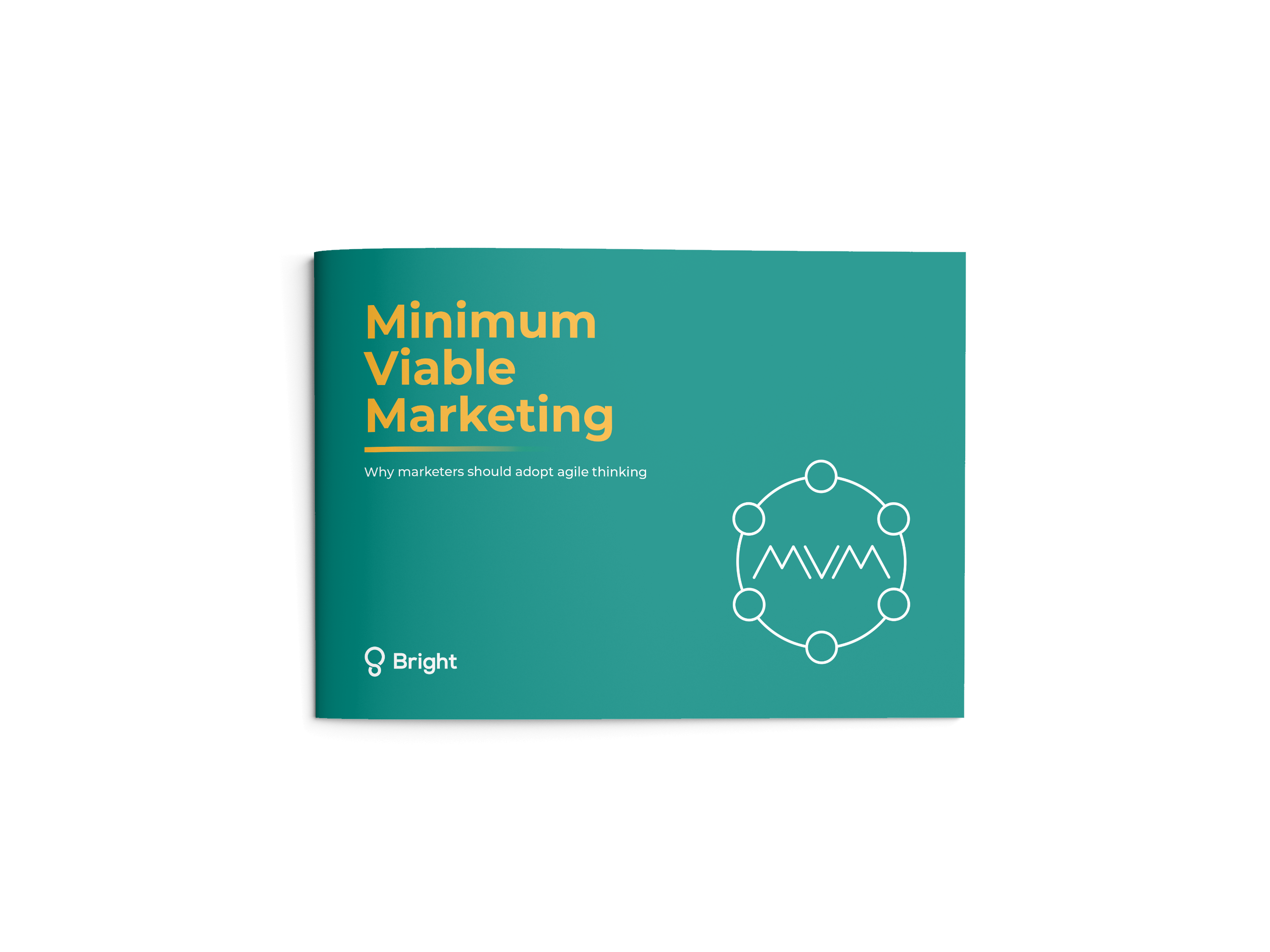Networks help businesses survive. Getting the clients you don’t know, that’s how businesses thrive.
From generating a pipeline of quality leads to creating a more attractive package for buyers, marketing acts as a business accelerator by bolstering sale efforts and influencing the tens of thousands beyond your personal networks. If you’re still not convinced, check for yourself why agile marketing is so important to your business’ growth:
1. Uncovers your value proposition
Choose Uber and you’ll get a ride at the touch of a button. Use Mailchimp and you’ll not only build your brand, you’ll sell more and send better emails. Head to the Colonel, and you know you’ll leave with a finger licking good meal.
Nobody wants the first thing they read about a brand to be a long-winded evaluation of something unrelated to the core offerings. People want to know how you’ll save them time or money, or where they can find some tasty chicken. And that’s why the brands mentioned above have thrived.
All of them have spent time clearly defining their product or service offering. They have developed a unique value proposition, branded it, marketed it and capitalised on it. All things that fall into a marketer’s remit.
In the words of Kevin Hochman, brand president and chief concept officer for KFC: “When Kentucky Fried Chicken was at its best and growing the fastest, the Colonel and his values were at the centre of everything we did. … Those values are critical to what makes Kentucky Fried Chicken so great”
But what happens when your business has a little more meat on the bones and can’t be served deep fried in a bucket?
It shouldn’t and doesn’t matter what your offering is. A value proposition is a promise of value and is arguably the most important part of your overall marketing messaging. It is a clear statement that tells prospects why they should invest in you.
“Marketing is invaluable in helping businesses to explain their services concisely, so that someone easily understands what you do and why they should buy from you – which is of course key to helping your business grow” – Steve Anderson, Managing Partner at Capitalise.
In short, take time defining the values that make your business such a tempting service – it’s what separates you from your competition. Once established, amplify your value proposition to targeted prospects in a way that resonates with them long after they’ve engaged. In doing so, you’ll remove unnecessary hurdles and instead, give them every reason to invest.
Hear more analysis from industry experts in our eBook: “Marketing as an Accelerator”
2. Builds a pipeline
Less is sometimes more – even in the world of business.
Forrester – a market research company – found that 99% of leads never convert to customers. So, whilst high numbers look impressive on paper, sales need revenue, not thousands of cold leads in the top of a funnel. This shift from quantity to quality in the B2B space is what prompted the evolution from lead generation to pipeline marketing and now maximisation of customer lifetime value.
Rather than focusing on generating new leads, pipeline marketing concentrates on delivering customers. It does this by aligning marketing and sales’ decision making and goals with revenue generation – not campaign diagnostics.
For Paul Beaumont, Growth Director at Equiteq, the pipeline is an extension of the value proposition; “once you’ve defined the value your business offers, you can be clear about the clients you’ll market to, and your messaging”. The pipeline approach is about specifically targeting the customers you want, and those who will benefit from your offering, rather than exhausting your efforts on everybody who owns a computer or email account.
It’s also worth noting that when it comes to lead prospecting, the more successful businesses don’t buy their fuel from the pump. They also don’t rely solely on personal networks. Instead, they build and nurture a pipeline to maintain a velocity in their sales stream. They keep their database up to date, too.
According to LeadGenius data, more than one-third of a business’s contacts become outdated each year, with data becoming dormant at a rate of more than three percent each month. Whilst GDPR gave companies a good reason to audit their database, cleaning data is a necessary evil that needs to be completed regularly. Not only does it keep marketing and sales efforts meaningful, it allows you to effectively monitor the health of your sales life cycle and tweak where necessary.
3. Establishes your brand – inside and out
In a recent Channel 4 documentary ‘Inside Dior’, a view was expressed that you need to ‘exploit your past to cement your future’. While Dior have certainly evolved with the times, their approach to fashion has fundamentally remained the same: absolute elegance and creative audacity.
The same thinking can, and should, be applied to any brand. It’s about recognising the foundations of your business, building a brand on those values and remaining true to these as you grow.
As Mike Altendorf – advisor and investor – recognises, marketing is more than just attracting new clients, “it also helps to establish your brand, builds your reputation and, as you get bigger, ensures your brand is as strong internally as it is externally”.
Whilst consistency in external-facing work is self-explanatory, internal marketing is just as important when it comes to sales. Why?
- It establishes a powerful emotional connection between your team and your products/services
- It creates staff loyalty, as you’ll give them a reason to buy into the company vision
- Without that connection, it’s likely your employees will undermine the expectations set by your advertising
It is often easier to live and breathe certain company’s values when these have remained mostly unchanged during a company’s history. When a company experiences a fundamental change (new management, acquisition, new team structure…) however, most experience some form of internal resistance.
Nobody likes change, and during this time, employees will be seeking direction from senior employees. Seniors on the other hand will be hoping to squash unproductive rumourmongering. These turning points are ideal opportunities for an internal branding campaign to direct people’s energy in a positive direction, to harbour a consistency of thinking across the business and to vividly articulate the value proposition.
Royal London seized such an opportunity last year when they decided to evolve how feedback was captured across the business. They created a culture pod as part of a companywide internal communication campaign, canvassing the views and opinions of more than 50% of employees from every level and area of the business. The goal was to resonate with the hard to reach, establish a shared vision amongst staff and deliver a great experience supported by the core values. It worked: new business growth was up 28%, and morale was boosted, too.
4. Attracts buyers
In the words of Mike Altendorf, “buyers will often look for businesses that have an effective and proven marketing strategy and delivery model – but it’s also key to attracting the attention of the buyer in the first place.”
If your company is already making the right noise in the marketplace, it is likely buyers will come to you with interest. But this is just the first hurdle.
Buyers often make judgements based on first impressions and gut instincts. Expect this and ensure the complexities of your business’s “story” are captured in marketing materials – not just the financial statements. Without presenting a strong narative, buyers are unable to understand that last’s year numbers were down because a squirrel caused a company-wide blackout, costing the company in downtime – it happens more than you think.
Another important factor for buyers is the longevity of the business they are about to buy. This includes having confidence in revenue streams and staff retention.
A company is far more attractive to a potential buyer when their bottom line doesn’t depend on only one or two large clients. Having a holistic marketing strategy in place shows that you have considered activities that drive growth and new business opportunities. Using an agile marketing approach shows alignment between your marketing and sales team – a task your new investors will not have to orchestrate. A healthy pipeline is equally influential as it will demonstrate movement in the sales stream and pinpoint successful tactics to build on.
Strong internal branding and communication can also bring confidence to investors, as employees are more likely to be loyal to the brand rather than simply individuals. This is important because potential buyers need to know that key employees won’t jump ship after a sale, and that the business is capable of growing with new management or in your absence.
Fast forward with agile marketing
Using our unique capabilities and agile marketing methodology, Bright helps build integrated campaigns and marketing transformation projects that drive success for your business in both the short and long term. We enable businesses to accelerate growth quickly and profitably — triggering a positive impact, without the disruption.
For more in depth analysis on how you can leverage marketing to enable fast growth, download our eBook: “Marketing as an Accelerator”




















